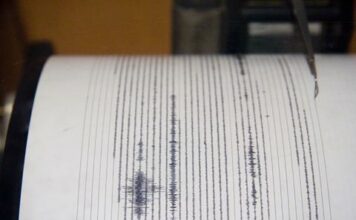Fred Fyvie is 11 years old and a seventh-grade student at Mount
Madonna School. Last month I agreed to
”
kid-sit
”
Fred for a weekend while his father Greg Fyvie of Morgan Hill
went out of town.
Fred Fyvie is 11 years old and a seventh-grade student at Mount Madonna School. Last month I agreed to “kid-sit” Fred for a weekend while his father Greg Fyvie of Morgan Hill went out of town.
Fred loves the ocean. The boy is originally from Minnesota, and he informed me that no major oceans of the world currently border his home state.
He told me there’s lots of lakes in Minnesota — more than 10,000 of them, as a matter of fact. Just no oceans.
So for our weekend outing, I decided to take him to the Monterey Bay Aquarium which, conveniently enough, happens to be located right along a major ocean – the Pacific Ocean, as a matter of fact.
The world-famous aquarium is a place guaranteed to please any 11-year-old.
Fred and I arrived at the aquarium at 10 a.m. just as it opened.
The first place we headed was the Outer Bay section where the jellyfish are located. Along with other visitors, we ogled at the jellies bobbing around inside their tanks.
They don’t look like animals really but floating works of bizarre modern art.
The most amazing species are the bright orange sea nettles rising and falling and circulating in their tanks like a living version of a lava lamp.
Did you know a jellyfish’s body consists of 97 percent water? It boggles the mind that a living creature can be almost entirely made out of H2O.
After the jellyfish, our next stop was the million-gallon Outer Bay aquarium.
Through a thick sheet of glass 54-feet long and 15-feet high, we watched in awe at the water ballet of the sea creatures – barracudas, ocean sunfish, bluefin tunas and a giant sea turtle. They glided around non-stop in their watery abode.
Sometimes a fish would stare out at us humans peering through the glass at them. I wondered what the fish might be thinking. Perhaps the strange two-legged animals gazing at them were just as wondrous as we considered them.
“So many different shapes and sizes and colors,” a tuna might contemplate about us human beings. “Do they eat their young like some of us fish do?”
Fred and I wandered among more ocean-life displays such as the shark exhibit and the endangered species exhibit.
We were eventually drawn to the always popular sea otter tank. Two otters dove and swam with a natural grace as a large group of tourists enjoyed the show.
The otters seemed to love performing for the crowd, and Fred and I watched their underwater gymnastics for a long while.
Fred was impressed by the aquarium’s kelp forest tank always busy with fascinating sea life.
The long streams of golden kelp sway gently back and forth, lulling visitors into a hypnotic trance as an assortment of fish swam through this submarine forest.
I spied on Fred and other tourists gazing with fascination through the glass. Why are people so captivated by aquatic animals such as fish, sharks, otters and whales?
One reason I believe is because there’s such an astonishing diversity of life forms co-existing in this planet’s oceans.
Another reason might be more primal.
Perhaps there’s a longing in every human to connect to the ocean world, our first home.
Perhaps watching the fish circulating through their tanks, we bridge back to the time hundreds of millions years ago to our fish ancestors, long-distance cousins on the evolutionary tree of life.
The afternoon at the aquarium passed quickly.
Fred and I enjoyed the playful penguins in their glass enclosure happily excited by the human beings watching them.
We stroked the velvety skin of a bat ray as it glided along the bottom of its shallow pool.
And we vigorously searched the rocky crevices of the octopus tanks for eight-armed denizens of the deep artfully camouflaged in their hiding spots.
Around 4 o’clock, we left the aquarium and drove along the coast and stopped at a state beach.
We climbed an outcropping of rocks as waves crashed up, exploding white fountains of salt-sprayed water.
We watched single-file lines of pelicans and other seabirds sweep low along the foamy coastline, heading home from the day’s fishing.
As the tide crept in around the rocks, we inspected pools for marines creatures. Barnacles fan-danced their feathery legs for the catch of day.
Two hermit crabs clawed each other in a neighborhood dispute.
Could they suspect giants hovered above them, entertained by the squabble?
I turned and gazed up at the blue sky, half-fearing I’d see a pair of massive eyes spying down on me.
As the sun dropped toward the Pacific horizon, the sea transformed into a sheet of quicksilver.
I gazed out at the bay and reflected on the tight net of the marine ecosystem. Ocean-based mammals, birds, fish, crustaceans, microbes and plants – all here depended on the sea for life.
And humans are also connected to the ocean, depending on it for life as well.
Unfortunately, adults tend to forget that the world is an amazing place.
As we get older, we often shut down our minds to the fantastic wonders abounding all around us.
That’s why it’s good now and then to spend an aquarium afternoon with a kid.
Fred helped me regain for a day an 11-year-old’s fresh perspective of the world.
Fred reminded me how amazing life looks through the eyes of a kid.












